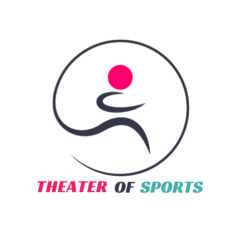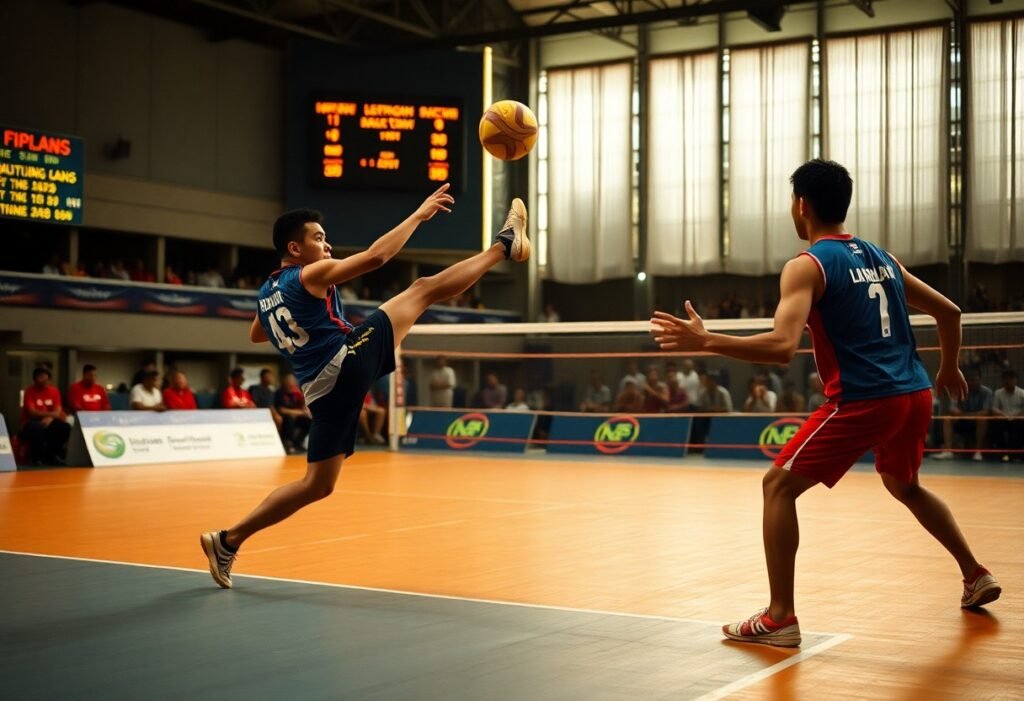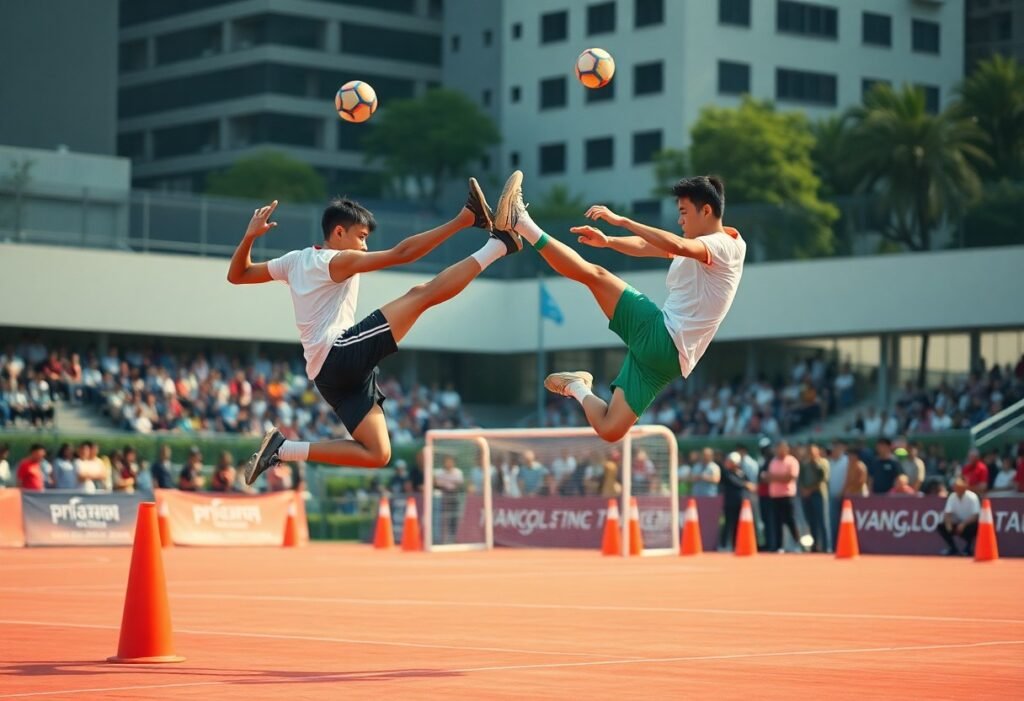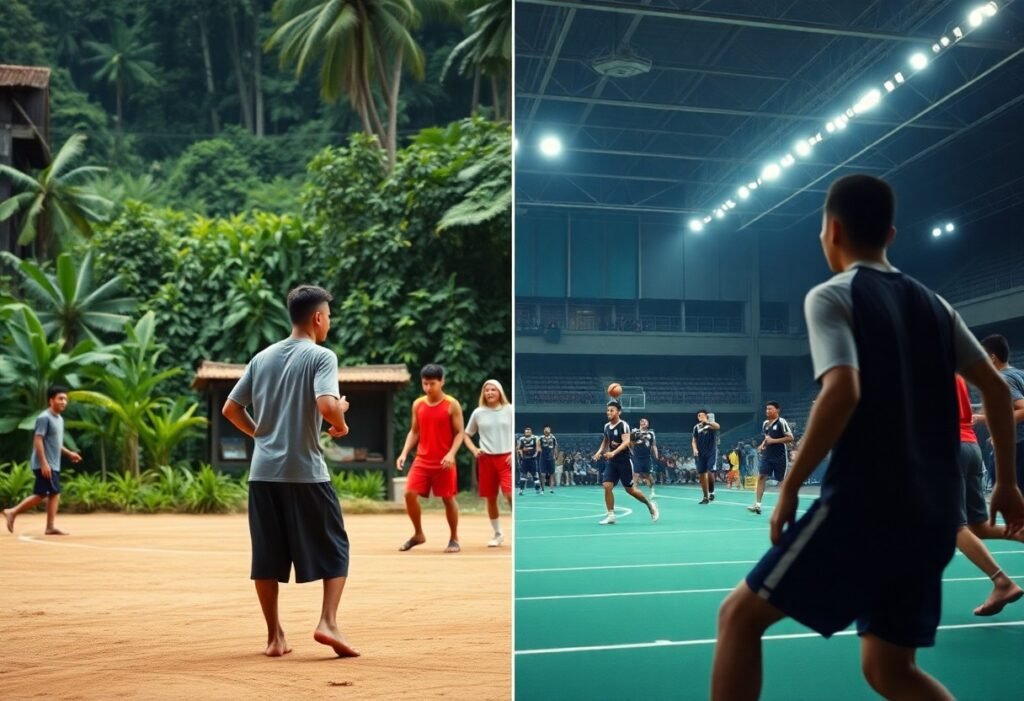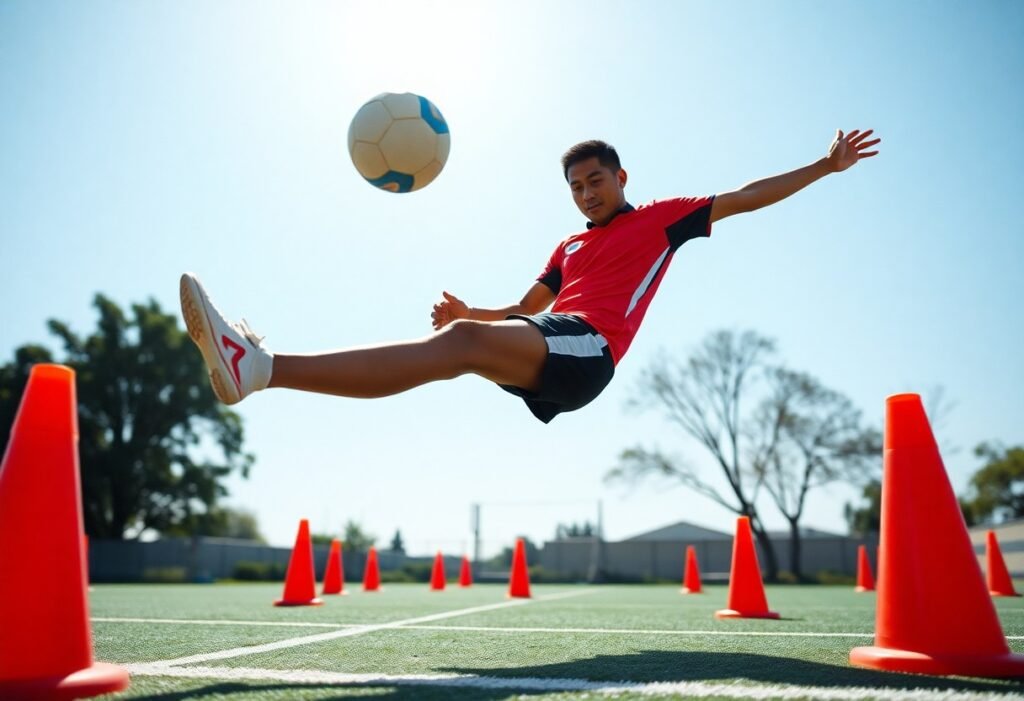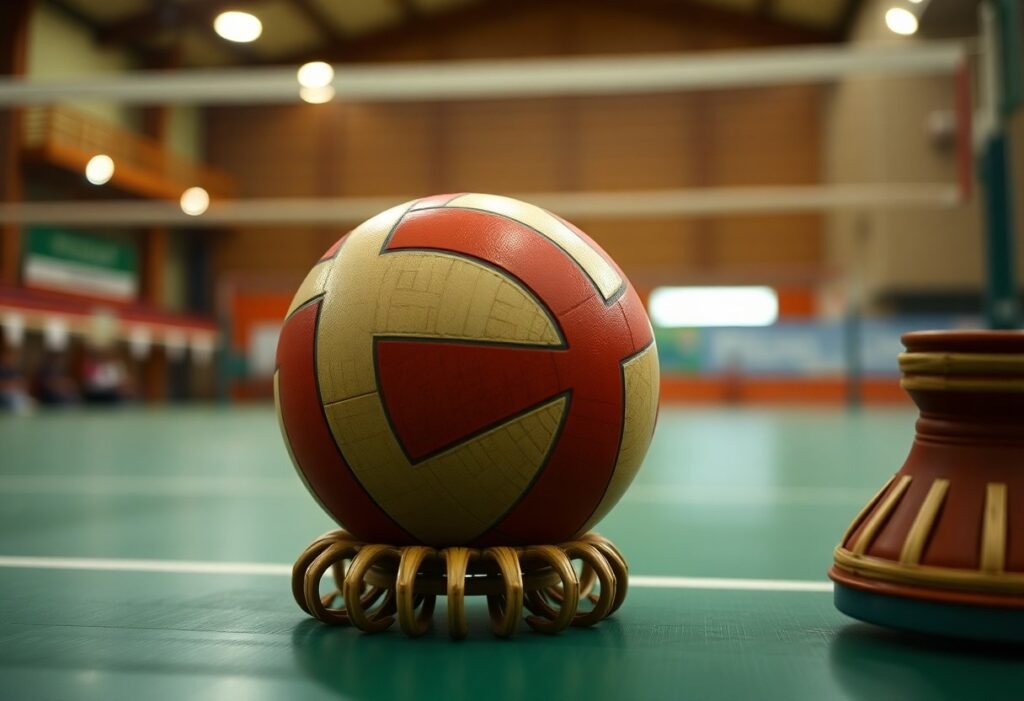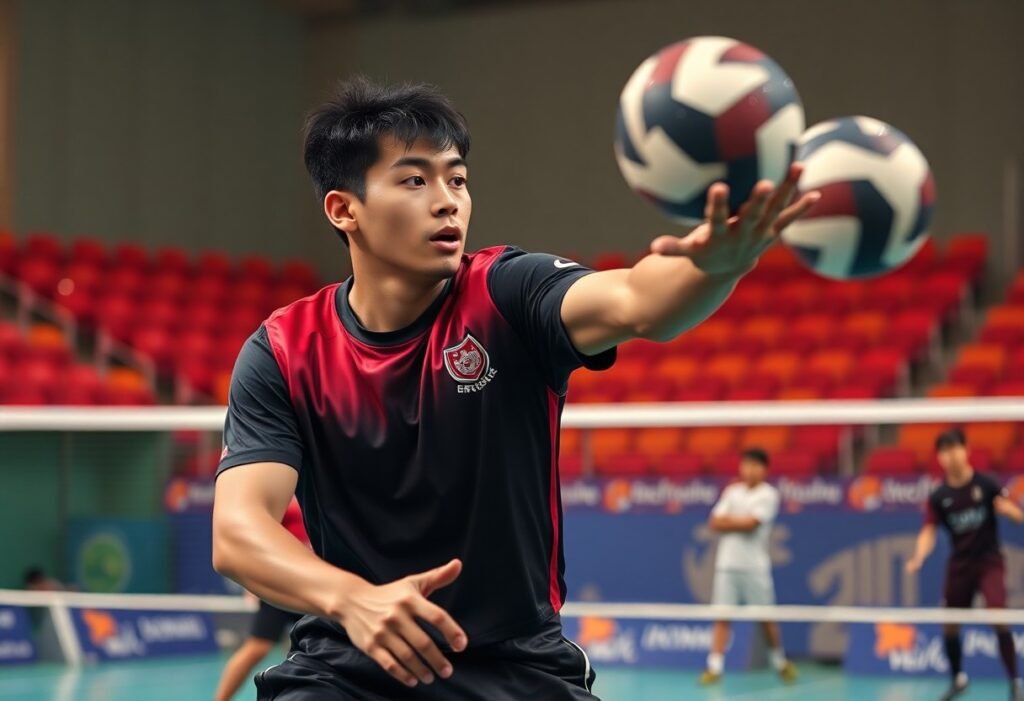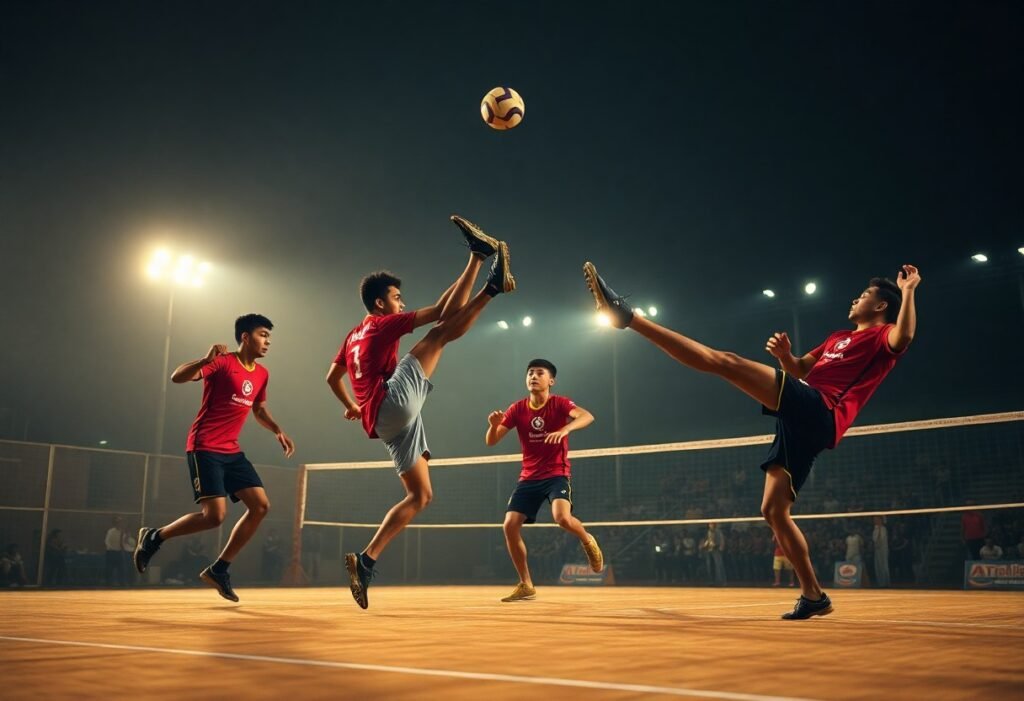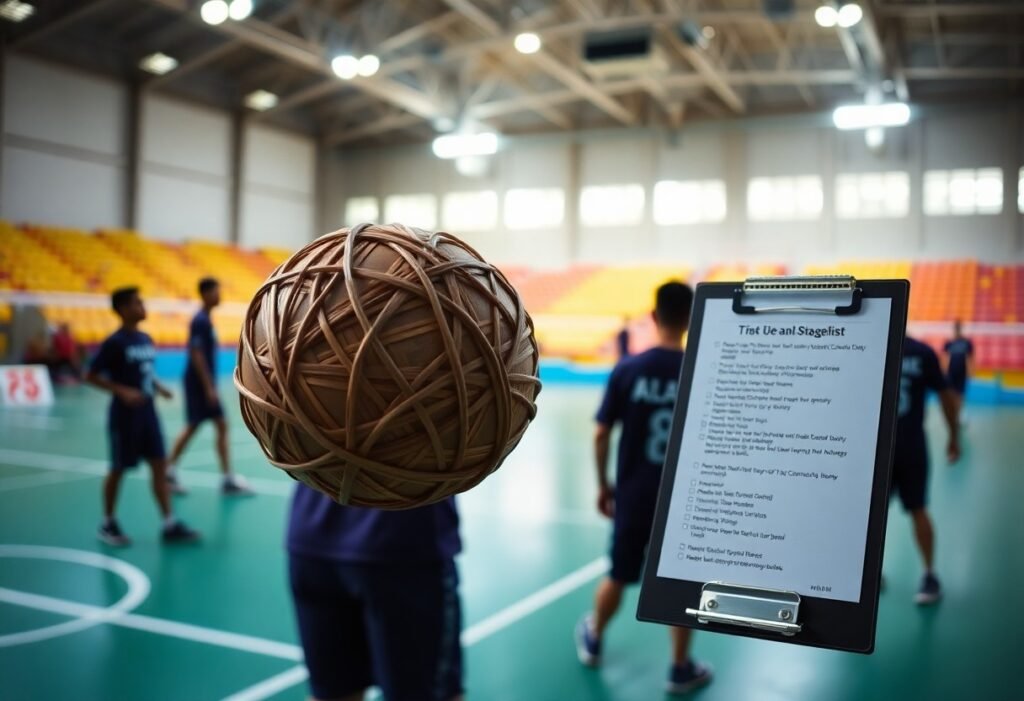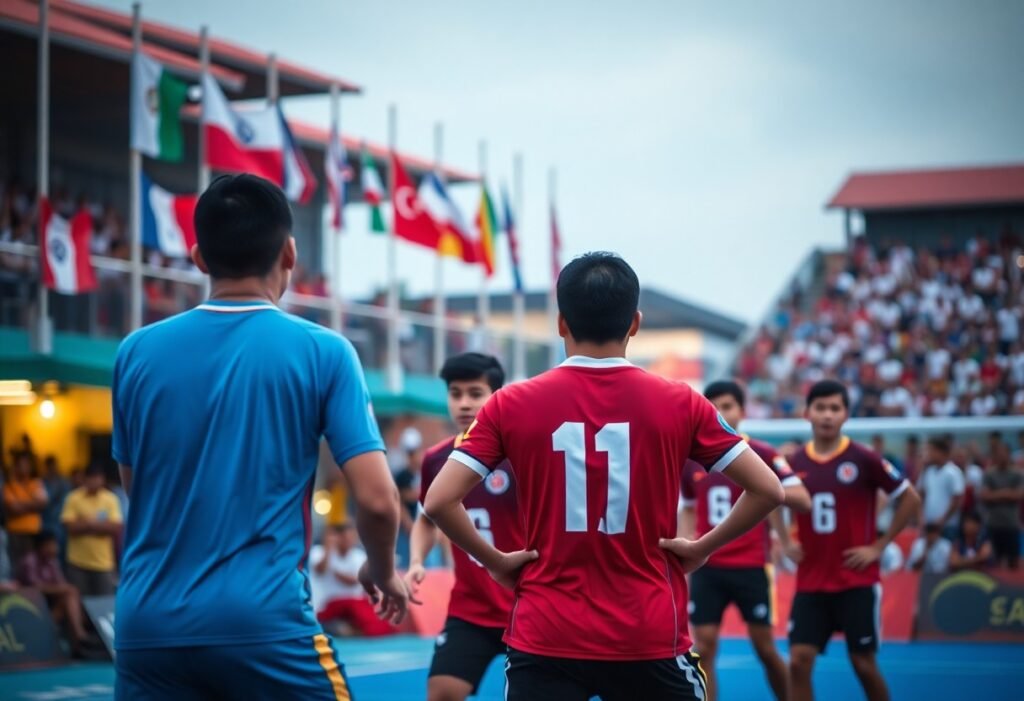Build Agility and Reflexes for Sepak Takraw with this practical guide. Many athletes find that developing quickness and coordination is key to mastering the game. Here, you’ll discover training techniques to boost your reaction time, enhance movement on the court, and improve overall performance. With consistent practice, you can move faster, play smarter, and take your Sepak Takraw skills to the next level.
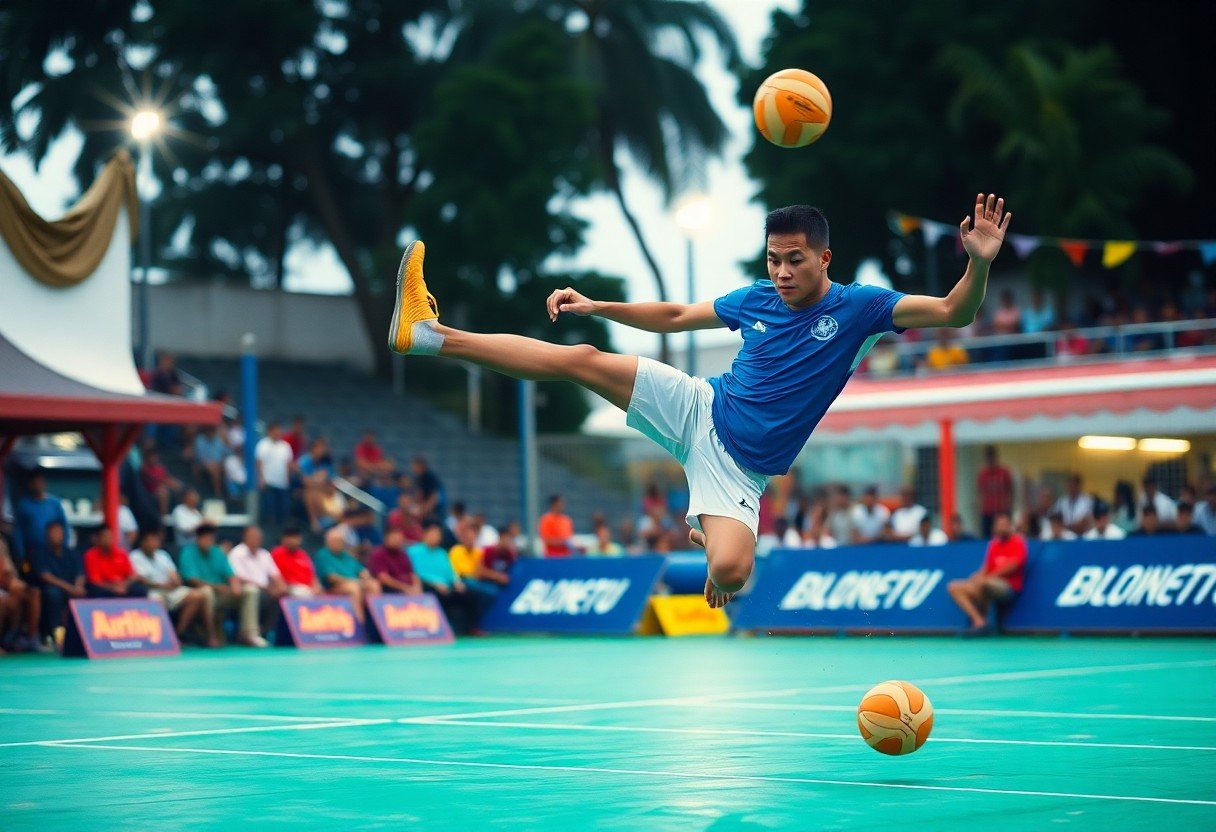
Key Takeaways:
- Incorporate plyometric exercises and footwork drills to enhance explosive power and quick directional changes vital for sepak takraw.
- Utilize sport-specific skills training, such as juggling and passing the ball, to improve hand-eye coordination and timing.
- Focus on developing a strong core and flexibility through targeted workouts, as these factors contribute significantly to overall agility and movement fluidity on the court.
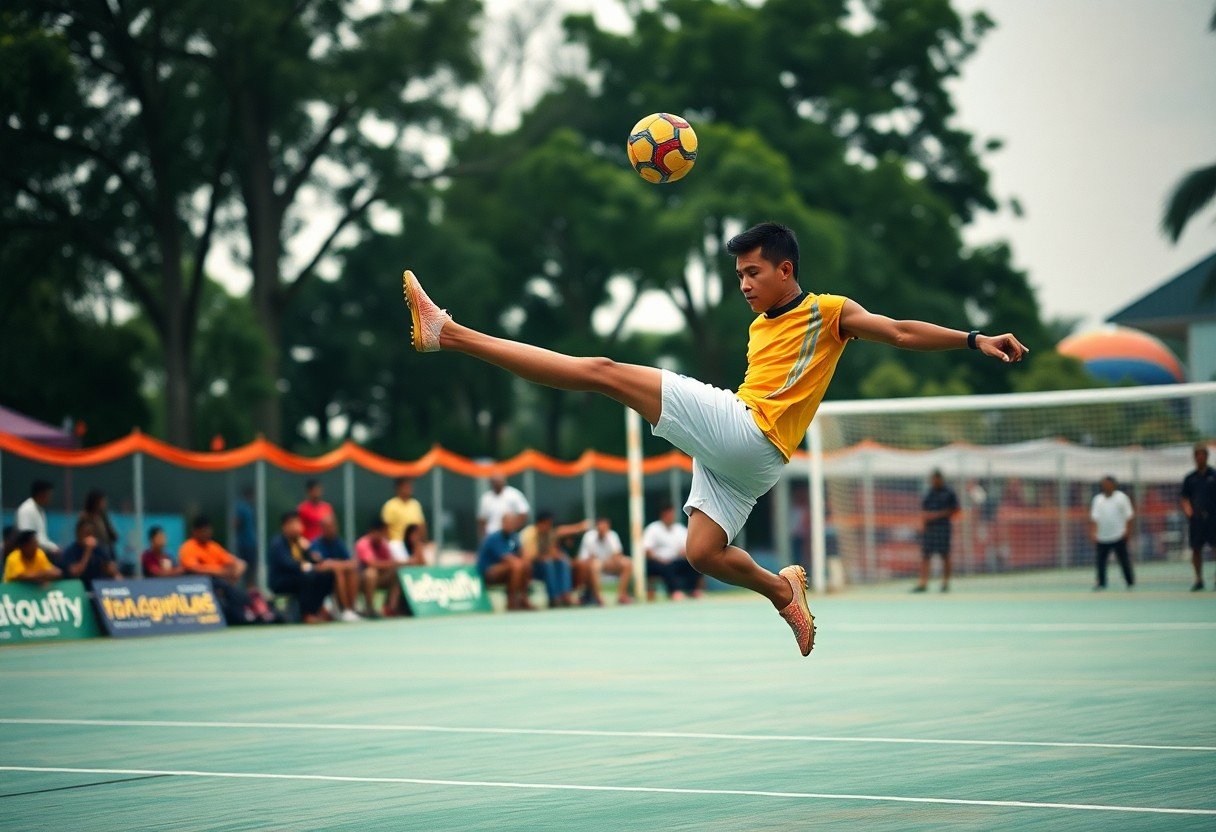
Understanding Agility and Reflexes
Before entering into the techniques for enhancing your skills in Sepak Takraw, it’s imperative to grasp the core concepts of agility and reflexes. These two attributes not only signify your ability to move swiftly and efficiently but also highlight your capacity to respond quickly to dynamic situations during gameplay. The more adept you become at both, the more you position yourself for success on the court.
Definition and Importance
Even though agility and reflexes are often used interchangeably, they carry distinct meanings. Agility refers to your ability to change direction or speed rapidly while maintaining control, while reflexes involve your body’s immediate responses to external stimuli. Developing both is fundamental for any serious athlete, as they enhance your performance and can be the difference between winning and losing.
Role in Sepak Takraw Performance
Takraw requires a unique blend of agility and reflexes, as the game is played at a fast pace with unpredictable movements. Your footwork, timing, and decision-making are all put to the test, demanding precision and speed. Refined agility allows you to maneuver around the court with ease, while quick reflexes enable you to react promptly to your opponent’s actions, making it easier for you to intercept serves and respond to spikes.
Reflexes in Sepak Takraw are particularly important, as they enable you to make split-second decisions when receiving the ball. Strong reflexes can enhance your ability to predict your opponent’s moves, allowing you to be one step ahead in the game. This means you will be better positioned to execute defensive plays and strike with accuracy. In a sport where the ball moves very quickly, having sharp reflexes can turn the tide of a match, ensuring that you can capitalize on opportunities for scoring while effectively protecting your side of the court.
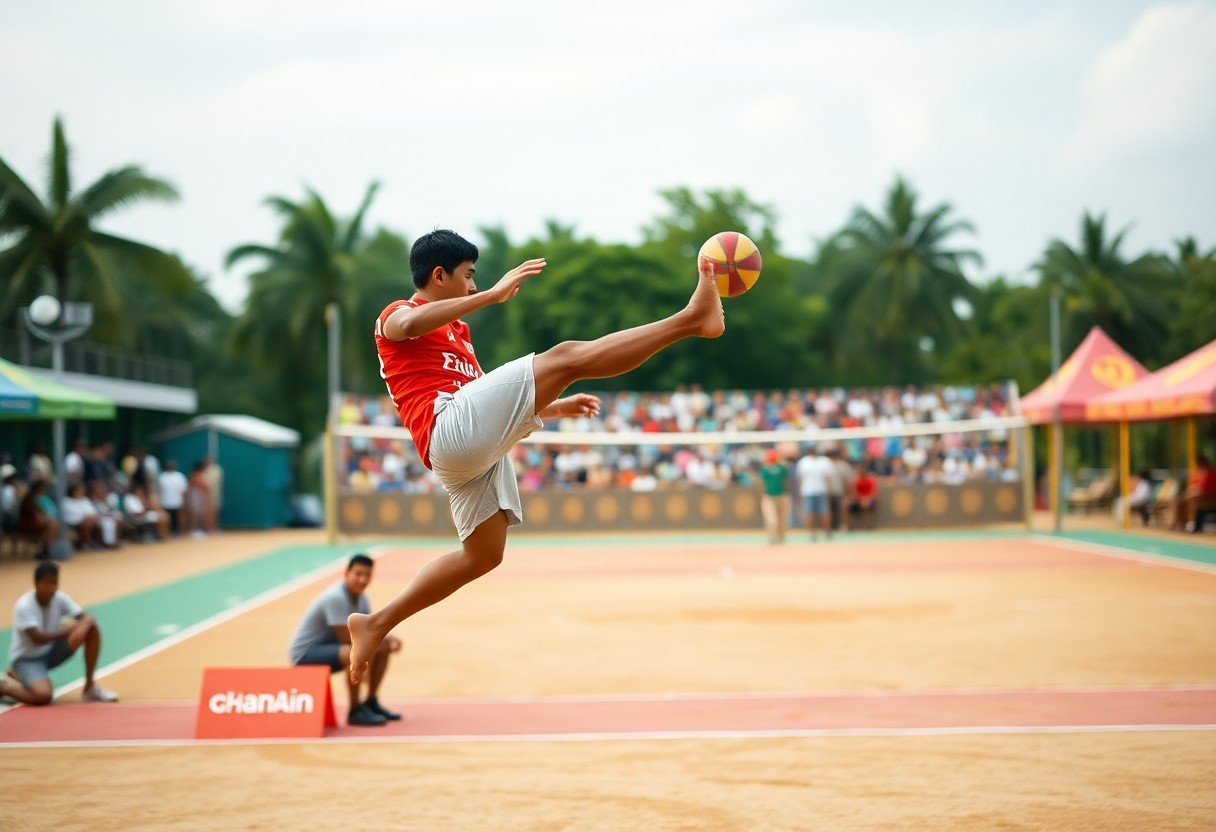
Key Factors Influencing Agility and Reflexes
Even a slight improvement in your agility and reflexes can significantly elevate your performance in Sepak Takraw. Understanding the factors that contribute to these necessary skills is vital for any player aiming for excellence. Here are some key influences:
- Physical Fitness Levels
- Reaction Time
- Coordination and Balance
Knowing these factors can help you tailor your training program for optimal results.
Physical Fitness Levels
Assuming you maintain high physical fitness levels, your body will respond better to the demands of the sport. Enhanced strength, endurance, and flexibility enable quicker movements and reduce the risk of injuries, which are necessary for improving your overall game.
Reaction Time and Its Impact
Little does one realize how reaction time can dramatically influence your gameplay. It is the speed at which you perceive a situation and act accordingly, directly affecting your ability to respond to opponents’ moves efficiently.
Influencing how quickly you can make decisions, reaction time allows you to anticipate the trajectory of the ball and position yourself accordingly. A faster response aids in making critical plays during matches, setting you apart from your opponents. Even a fraction of a second can mean the difference between winning and losing.
Coordination and Balance
Assuming you possess good coordination and balance, you will find it easier to execute complex maneuvers during a game. This foundational skill helps you maintain control as you move swiftly across the court.
Time spent developing your coordination and balance can enhance your overall performance in Sepak Takraw. Improved coordination allows you to make intricate kicks and passes while maintaining your footing, increasing your efficiency and effectiveness during play. Proper balance ensures that you can adapt to rapid changes in dynamics, making it possible to respond strategically to your opponent’s actions.
How to Enhance Agility
All athletes aim for quick movements, and enhancing your agility will greatly impact your performance in Sepak Takraw. By focusing on specific drills and exercises, you’ll be able to increase your speed and responsiveness, key attributes for success in this dynamic sport.
Agility Drills and Exercises
While agility drills like shuttle runs, ladder drills, and side-to-side hops can significantly improve your footwork, they also enhance your body awareness and coordination. Aim to include these drills in your training routine several times per week to develop the quick reflexes needed for Sepak Takraw.
Incorporating Plyometrics
Ladder drills introduce a rhythmic pattern to your movements, allowing you to focus on foot speed and coordination. These drills are effective for improving your agility, especially when combined with plyometric exercises. Plyometrics, such as box jumps and burpees, build explosive power, enabling you to react swiftly to the fast-paced actions of your opponents.
Cone drills can be especially beneficial for enhancing agility. By setting up cones and practicing quick changes of direction, you’ll improve your reaction time and footwork. This exercise not only *strengthens your leg muscles* but also ensures you *develop a plan for moving around the court effectively*. Incorporating these drills into your routine will expedite your agility training and contribute to your overall performance in Sepak Takraw. Always pay attention to your form to avoid any injuries and maximize your gains.
How to Improve Reflexes
Once again, enhancing your reflexes is vital for excelling in Sepak Takraw. Good reflexes allow you to respond quickly to the fast-paced nature of the game, enabling you to react to your opponent’s moves and the ball’s trajectory with precision. By adopting effective training techniques and leveraging modern technology, you can significantly improve your reflexive response time on the court.
Reflex Training Techniques
For building your reflexes, consider incorporating drills such as reaction ball exercises, shuttle runs, and partner drills. These activities will help you develop the muscle memory and hand-eye coordination necessary for quick reactions during gameplay. Focus on maintaining a consistent practice schedule to gradually enhance your reflexes.
Utilizing Technology
For a more tailored approach, integrating technology into your training can significantly boost your reflex skills. Tools like high-speed cameras, reflex training apps, and wearable devices can provide insightful data about your performance and offer interactive drills designed to enhance your reaction time.
Understanding how these technologies work can transform your training experience. Using high-speed cameras, you can analyze your movements in real-time, identifying areas of improvement. Reflex training apps often present a series of fast-paced tasks that challenge your reaction time, while wearable devices monitor your performance metrics, providing personalized feedback to accelerate your growth. By embracing these advancements, you can create a more effective training regimen that prioritizes your reflex development.
Tips for Maintaining Consistency
Now, maintaining consistency in your training is vital to building the agility and reflexes required for Sepak Takraw. Here are some tips to help you stay on track:
- Establish a regular training schedule.
- Incorporate a variety of drills to engage different aspects of your game.
- Find a training partner or join a local team for motivation.
- Stay focused on your progress and adapt your goals as needed.
- Prioritize rest and recovery to avoid burnout.
Any effort you put into maintaining consistency will lead to greater agility and improved performance in Sepak Takraw.
Setting Realistic Goals
On your journey to excel in Sepak Takraw, it’s important to set realistic goals that are attainable and measurable. This ensures that you remain motivated while also challenging yourself. Consider breaking down larger objectives into smaller, manageable milestones that you can achieve consistently, keeping your focus clear and progress tangible.
Tracking Progress
Now, tracking your progress is a fundamental part of maintaining consistency. Regularly evaluate your skills and goals to identify any areas that require improvement or adjustment. This can be done through journaling, video analysis, or feedback from coaches and peers, helping you stay accountable and informed about your development.
A great way to track your progress is by documenting your training sessions and noting specific improvements over time. Whether it’s a faster reaction time, better footwork, or improved techniques, these records will not only highlight your advancements but also serve as motivation to keep you dedicated to your training in Sepak Takraw.
Overcoming Plateaus
Overcoming plateaus is an inevitable aspect of your training journey. If you find yourself stuck at the same skill level for an extended period, it’s important to assess your training regimen and introduce new techniques or drills that can reignite your progress.
The key to overcoming plateaus in Sepak Takraw lies in variety and self-reflection. Change up your routines, focus on different drills, and seek input from coaches or experienced players. By continually challenging yourself and adapting your approach, you can break through barriers and reach new heights in your reflexes and agility.
Nutrition and Recovery Strategies
Many athletes overlook the significance of nutrition and recovery in their training regimen. Proper nutrition fuels your body while enhancing performance, leading to improved agility and reflexes necessary for success in Sepak Takraw. For further insights, check the research on Quality of the physical condition and basic techniques … to understand how these elements contribute to your game.
Importance of Nutrition for Performance
Clearly, a balanced diet is fundamental for optimizing your athletic performance. It provides the energy needed for intense training sessions and helps maintain peak physical condition. A focus on whole foods, including fruits, vegetables, lean proteins, and whole grains, will keep you energized and support muscle recovery.
Recovery Techniques
There’s an array of recovery techniques that you can integrate into your training routine. These techniques not only ease muscle soreness but also help prevent injuries. Practices like stretching, foam rolling, and adequate sleep play significant roles in your recovery process.
Macronutrients should be a significant part of your post-training recovery strategy. Proficiently balancing carbohydrates, proteins, and fats enhances muscle recovery and replenishes energy stores. Consuming sufficient protein helps repair muscle tissues, while carbohydrates are necessary for restoring depleted glycogen levels. Don’t underestimate the benefits of hydration; staying properly hydrated will support your body’s recovery processes. Incorporating these macronutrient considerations into your diet can profoundly increase your athletic performance and overall health, allowing you to achieve excellence in Sepak Takraw.
Final Words
To wrap up, enhancing your agility and reflexes is vital for achieving excellence in Sepak Takraw. Incorporate a mix of agility drills, plyometric exercises, and reflex training into your routine. Focus on improving your footwork and hand-eye coordination through specific drills and practice. A balanced approach will not only boost your performance but also elevate your enjoyment of the sport. Stay committed to consistent training, and you’ll notice significant improvements in your agility and reaction times on the court.
FAQ
Q: What are the best exercises to improve agility for sepak takraw?
A: To enhance agility for sepaktakraw, focus on exercises that promote quick footwork and coordination. High-knees, ladder drills, and cone sprints can be effective. Incorporating plyometrics like box jumps and lateral hops will also increase explosive power needed for the game. Moreover, agility ladder workouts help in improving speed and footwork precision, which are necessary for maneuvering around opponents.
Q: How can I enhance my reflexes to succeed in sepak takraw?
A: Improving reflexes can be achieved through activities that require quick decision-making and reaction times. Engage in reaction drills such as partner ball tosses, where one person throws a ball unexpectedly, and the other must catch it or react. Practicing with a reflex ball can also help develop hand-eye coordination. Additionally, playing other fast-paced sports can contribute to better overall reflexive responses.
Q: Is strength training beneficial for improving agility and reflexes in sepak takraw?
A: Yes, strength training plays a significant role in enhancing agility and reflexes. Focusing on lower body exercises like squats, lunges, and deadlifts builds the necessary muscle strength for quick, powerful movements. Additionally, incorporating core-strengthening exercises, such as planks and rotational movements, supports stability, enabling faster and more controlled agility on the court.
Q: How often should I practice agility and reflex drills for optimal results?
A: To achieve the best results, aim to incorporate agility and reflex drills into your training routine at least 2-3 times per week. It’s necessary to balance these practices with other aspects of training, such as skill development and endurance, to maintain overall fitness. Consistency is key, so be sure to vary the types of drills to keep your training engaging and effective.
Q: What role does nutrition play in enhancing agility and reflexes?
A: Nutrition significantly impacts athletic performance, including agility and reflexes. Consuming a balanced diet rich in carbohydrates, proteins, and healthy fats fuels your body for training sessions. Staying hydrated is vital as dehydration can impair physical performance. Additionally, incorporating foods high in antioxidants may enhance recovery and reduce inflammation, allowing for better agility and quick reflex response during training and competitions.
